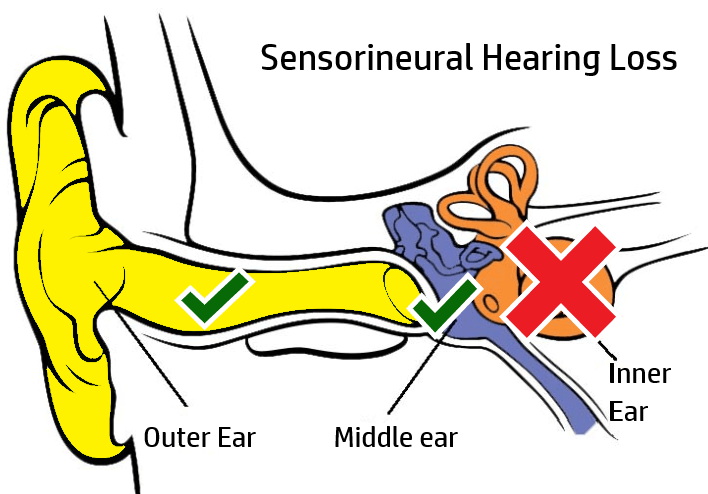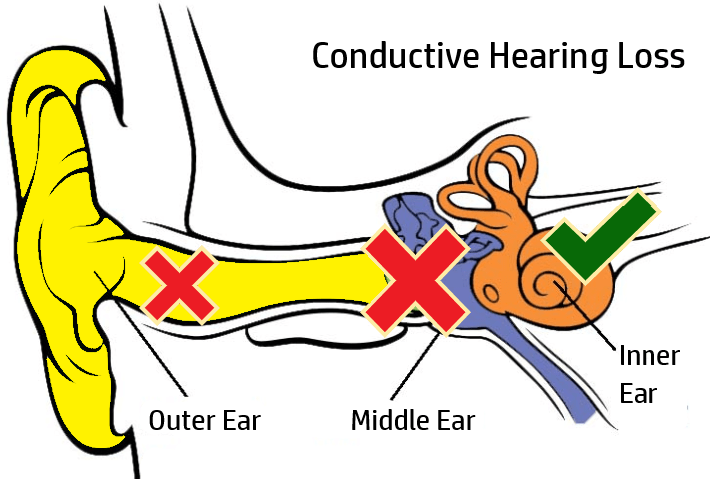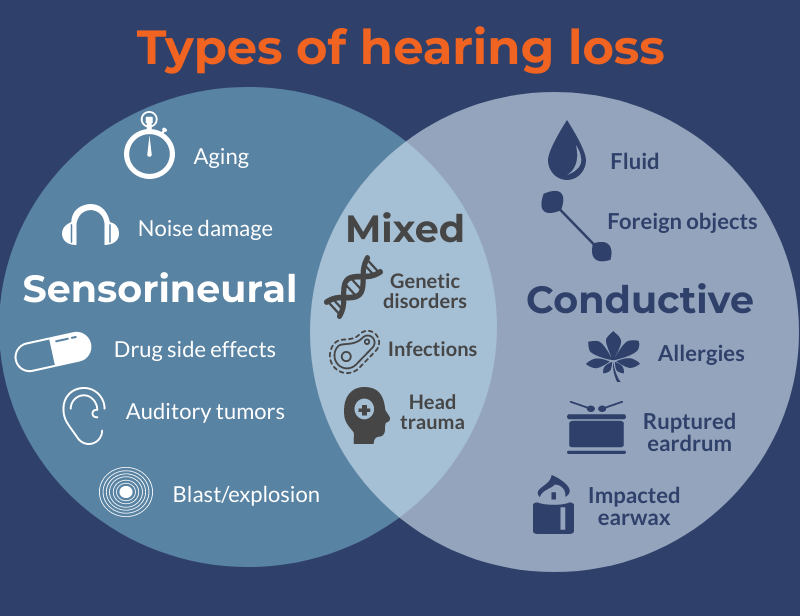Types of hearing loss
There are three different types of hearing loss. They are sensory-neural hearing loss (SNHL), Conductive hearing loss, and Mixed hearing loss. In regards to each type of hearing loss, there are corresponding treatment steps that need to be taken and their own appropriate treatment options.
Sensori-neural hearing loss (SNHL)
Sensori-neural hearing loss (SNHL) is the type of hearing loss that’s permanent. With SNHL damages dominantly occurred in the inner ear hearing organ, the cochlea, and / or nerves damages. With this type of hearing loss, consistently wearing hearing aids are the most common treatment option most of the time. Aging and noise exposure are some of the common causes of this type of hearing loss.

Conductive hearing loss
Conductive hearing loss is the type of hearing loss that’s most likely can be medically treated as the cause of this type of hearing loss is in the middle ear. The most common causes of conductive hearing loss are ear infection and fluid in the middle ear space. Other causes of conductive hearing loss such as otosclerosis (hardening of the middle ear bones), ossicle chain dehiscence (disconnect of the middle ear bones), and eardrum perforation. With conductive hearing loss, patient needs to be seen by a medical doctor, such as an ENT for medical treatments. With medical treatments such as ear surgery, antibiotics, etc. patient most likely can regain their hearing sensitivity upon completion of the treatment. However, if the patient denied medical treatments due to other medical or personal reasons after consulting with a medical doctor, or persistence of middle ear issues after medical treatments (ex. eardrum perforation despite multiple attempts of tympanoplasty), upon receiving medical clearance from a medical doctor, following up with an audiologist for a hearing aids consultation and consistent usage of hearing aids is strongly recommended.

Mixed hearing loss
Mixed hearing loss has both components of conductive hearing loss and sensory-neural hearing loss. (Ex. Hearing loss caused by both eardrum perforation & noise exposure). With this type of hearing loss, the patient needs to first follow up with a medical doctor (ex. ENT) for middle ear medical treatments. Afterward patient often needs to have another hearing test performed for the hearing professional to re-obtain the patient’s hearing thresholds without the conductive component. Thresholds without conductive components would be the results that hearing professionals use to determine the patient’s candidacy for hearing aids. If the patient denied medical treatments due to other medical or personal reasons after consulting with a medical doctor, or persistence of middle ear issues post medical treatments, or hearing loss persisted after the conductive component has been ruled out, hearing aids consultation with an audiologist and consistent usage of hearing aids would be the next appropriate steps to take. Medical clearance from a medical doctor would be needed if a conductive component is present.


